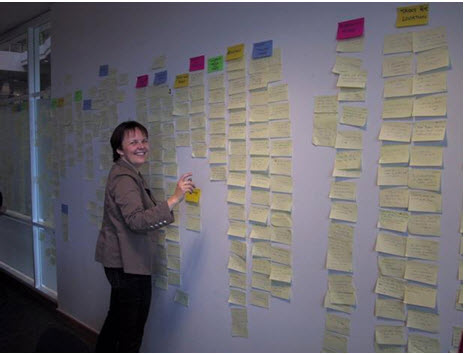Content Management (UCM) Metadata Profiles Part 2
Originally posted by Troy Allen on CMSWire on May 11, 2011.
Abstract: The following article has been split between two parts. Part two continues to provide an overview of utilizing Metadata Profiles within the Oracle WebCenter Content (formally known as Oracle UCM Server).
A New Approach to Unleash the Power
While working on a few of my most recent projects, I’ve started taking a different approach to metadata modeling for Document-centric applications of the Oracle UCM. By working from the outside-in, a model can be built that better drives the user experience.
The following is a simple guideline for building a metadata model without having to waste all of those sticky notes stuck to the wall. While this is specific to the Oracle UCM, it could be modified for other content management applications.

Source 1 – StickySorter Free from OfficeLabs published Novermber 28, 2008 by http://workerthread.wordpress.com
Step 1. Determine the types of content that will need unique metadata options. Examples of these may include Marketing, Finance, IT, and Compliance. Content may also have special needs based on the formatting of the content such as images or video files.
Step 2. Create a usage modeling spreadsheet and layout the required fields for each type and what the optional fields will be; include notes on how the field will be used or specific criteria for the fields:
Step 3. Insert all required and optional metadata fields into the Configuration Manager or Metadata tool (note that some fields may already exist as system metadata fields).
Step 4. Determine which metadata field will be used to drive the profiles. It is best to use something like ProfileTrigger.
Step 5. Create Rules for Global Required fields and for Profile-specific required fields.
Step 6. Create Rules for Profile-specific Optional metadata and include any special field handling requirements gathered from usage modeling:
Step 7. Create Profiles for the specific types of content that require different screens and add the appropriate rules:
Step 8. Test the new profiles and validate with the end users.
Final Thoughts
Profiles within Oracle’s UCM allows administrators to create better interfaces for their users while improving the systems capabilities around the metadata it collects for each managed object. If a user is presented with too many fields or has to put too much thinking into the tasks of checking in content or searching for it, they will find ways not to use the system.

